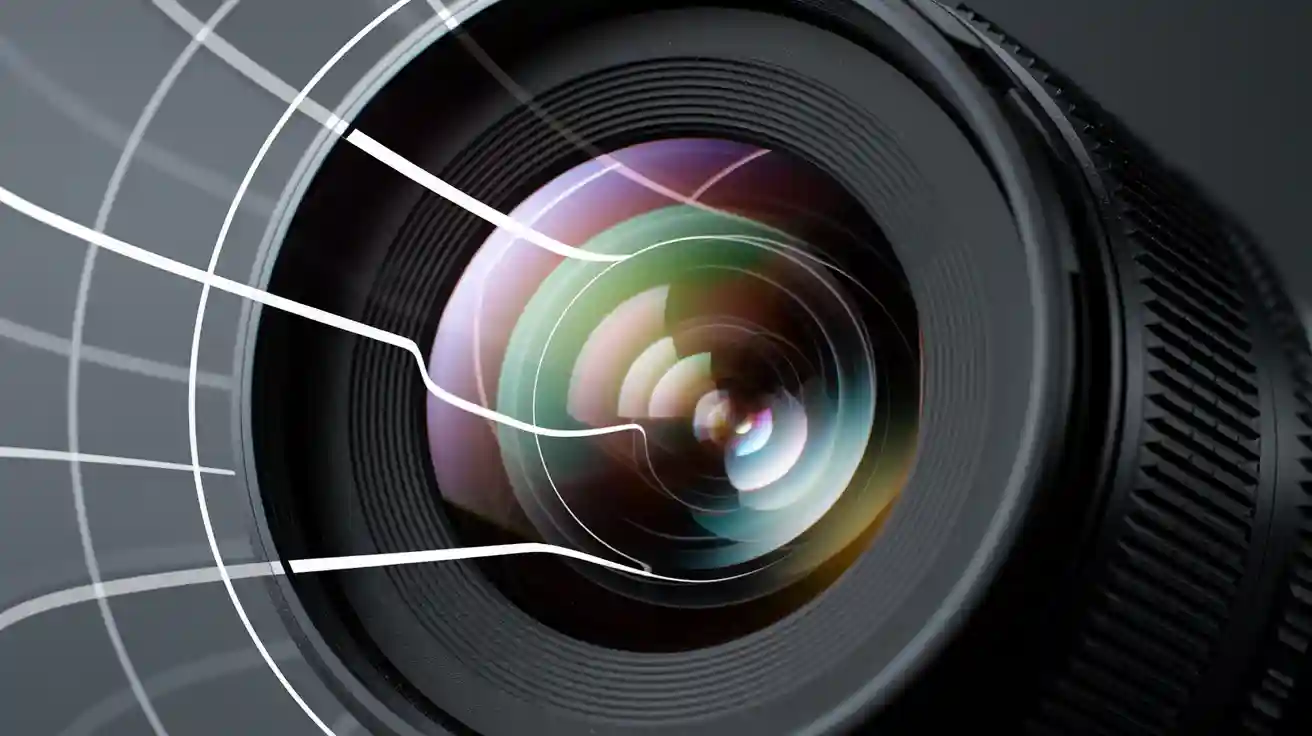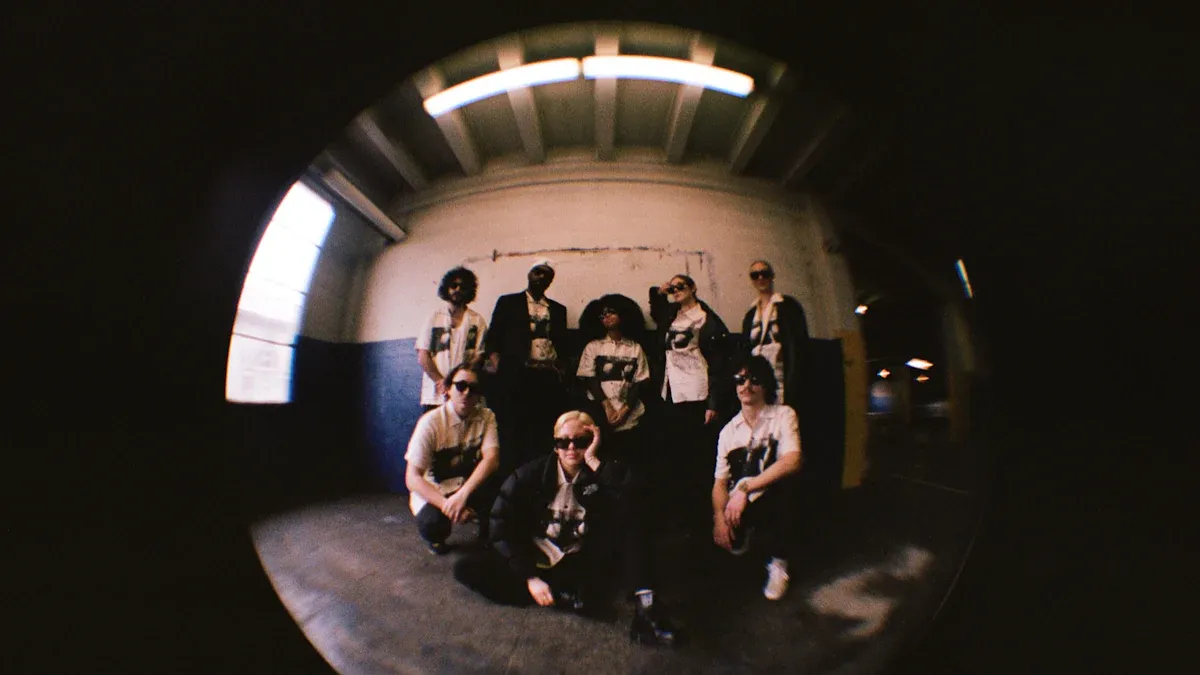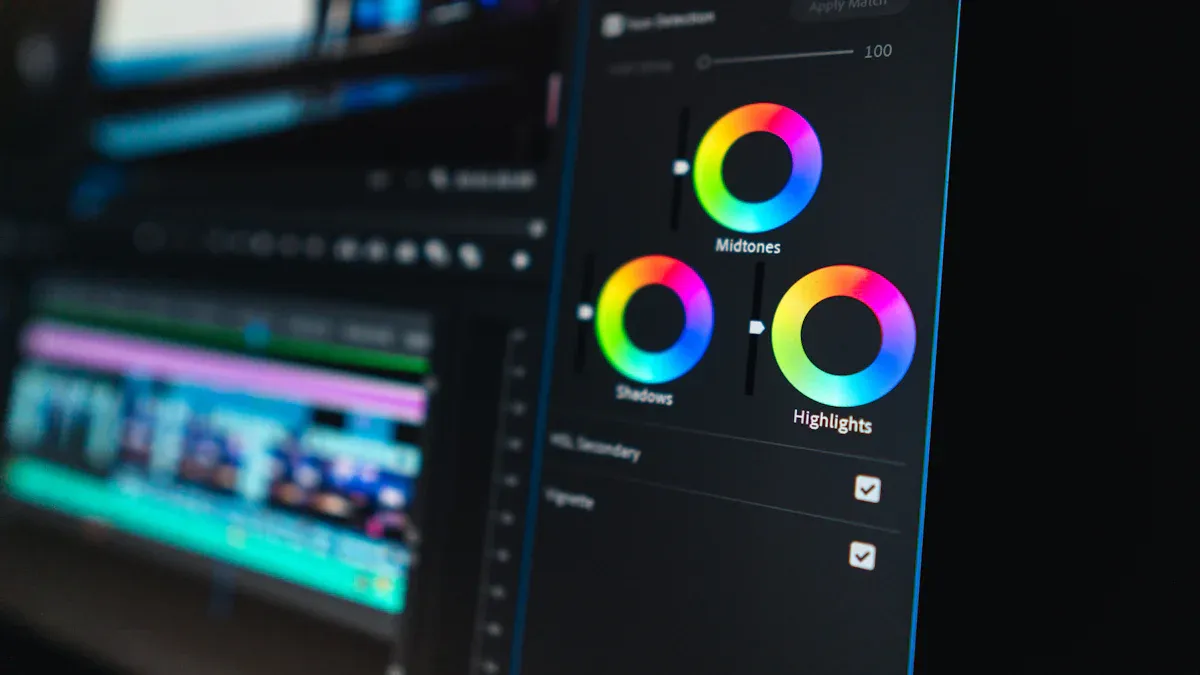3 Key Facts About Lens Distortion Systems

Imagine capturing an image where straight lines appear curved or objects seem stretched. This phenomenon, known as lens distortion, occurs when a lens misplaces image information geometrically. You encounter this issue in many imaging systems, but its impact becomes critical in a Lens Distortion machine vision system. Accurate imaging is essential for these systems to perform tasks like object detection or precise measurements. Without addressing distortion, the reliability of such systems decreases significantly, affecting their performance in automation and robotics.
Key Takeaways
- Lens distortion changes how images look, making straight lines bend. This can mess up accuracy in machine vision systems.
- There are different types of lens distortion: barrel, pincushion, and perspective. Each type affects measurements and object detection in unique ways.
- Fixing lens distortion is important for robots and automation to work well. Use special calibration methods and lenses without distortion to improve results.
- Software can help fix lens distortion. Algorithms can fix image shapes and make measurements more accurate.
- Buying good lenses and better hardware can lower distortion a lot. This helps create clear and exact images for many uses.
Understanding Lens Distortion in Machine Vision Systems
What is lens distortion?
Lens distortion refers to an optical error that alters the geometry of an image. Instead of maintaining consistent magnification across the frame, the lens causes objects to appear stretched, compressed, or curved. For example, straight lines may bend outward or inward, depending on the type of distortion. This phenomenon occurs due to imperfections in the lens design or its inability to project a three-dimensional scene onto a two-dimensional plane accurately.
In machine vision systems, lens distortion becomes a critical factor. It affects how the system interprets spatial relationships and object dimensions. Perspective distortion, a common type, makes objects appear smaller as they move further from the camera. You can minimize this effect by positioning the camera perpendicular to the field of view or using specialized lenses like telecentric lenses. These lenses correct perspective distortion, ensuring accurate measurements and reliable imaging.
Why does lens distortion matter in machine vision?
Lens distortion directly impacts the accuracy of a lens distortion machine vision system. Even small distortions can lead to significant errors in measurements, object detection, and alignment tasks. For instance, experimental data shows that models trained on undistorted images often struggle to detect objects at the edges of images captured with wide-angle or fisheye lenses. This happens because geometric compression distorts the object's shape, making it harder for algorithms to recognize.
The table below highlights the measurable impact of lens distortion on machine vision accuracy:
| Evidence Description | Measurement Impact |
|---|---|
| Maximum absolute distortion in images is approximately 1.2 pixels (TC2MHR048-F) and 1.4 pixels (TC2MHR058-F) | Decreases accuracy of measurements when ignored |
| Even small lens distortions are statistically highly significant | Cannot be omitted in real-world applications |
| All distortion-related parameters are highly significant | No overfitting occurs, even for small distortions |
As you can see, ignoring distortion in machine vision applications can compromise the system's reliability. Addressing it ensures that measurements remain precise and consistent, even in complex scenarios.
Examples of lens distortion in real-world applications
Lens distortion affects various machine vision applications, from industrial automation to robotics. In manufacturing, for example, systems rely on accurate imaging to measure components and detect defects. Distortion can lead to misaligned measurements, causing production errors. Similarly, in robotics, distorted images can misguide robotic arms, leading to improper object handling or assembly.
A case study illustrates how distortion impacts imaging systems. Researchers analyzed the combined effects of distortion, chromatic aberration, and point spread functions (PSF) on scenes viewed through two spherical lenses. The steps included calculating distortion matrices, estimating PSFs, and evaluating the overall image quality. The results showed that even moderately performing lenses could degrade image accuracy significantly, emphasizing the need for distortion correction.
By addressing lens distortion, you can enhance the performance of machine vision systems across diverse applications. Whether you're working with automated inspection systems or robotic vision, correcting distortion ensures optimal results.
Types of Lens Distortion and Their Impact

Barrel distortion and its effects on image geometry
Barrel distortion occurs when straight lines in an image curve outward, resembling the shape of a barrel. This type of geometric distortion is common in wide-angle lenses and fisheye lenses. You might notice this effect when photographing buildings or landscapes, where vertical lines appear bowed outward. Barrel distortion alters the spatial relationships in an image, making it challenging to maintain accurate proportions.
In machine vision systems, barrel distortion can disrupt measurements and object detection. For example, Pockett et al. (2010) found that barrel distortion affects stereoscopic scene perception, complicating spatial analysis. Similarly, Lee et al. (2019) highlighted the difficulties of correcting barrel distortion in fisheye lens images, especially during 3D content acquisition. These challenges underscore the importance of addressing lens aberrations to ensure precise imaging.
Pincushion distortion and its challenges in precision
Pincushion distortion bends straight lines inward, creating a pinched appearance. This distortion often occurs in telephoto lenses and magnifying optics. It can significantly impact precision measurements, especially in applications requiring high accuracy. For instance, modern CMOS image sensors exhibit pincushion distortion due to pixel structure design, leading to measurement inaccuracies.
Research has demonstrated the challenges posed by pincushion distortion:
- Traditional methods struggle to correct this distortion effectively.
- A mathematical approach improved distortion correction in angiographic images.
- Left ventricular measurements showed a 5-30% overestimation of geometric parameters when pincushion distortion was uncorrected.
- Certain image processing methods are sensitive to pincushion distortion, affecting correction accuracy.
These findings highlight the need for advanced correction techniques to mitigate the effects of pincushion distortion in machine vision systems.
Perspective distortion and its influence on measurements
Perspective distortion occurs when objects appear smaller as they move further from the camera. This distortion results from the lens projecting a three-dimensional scene onto a two-dimensional plane. You might encounter this effect in architectural photography, where parallel lines converge in the distance. In machine vision, perspective distortion can compromise measurement accuracy and spatial analysis.
Comparative studies have explored the impact of perspective distortion on facial landmark detection. Variations in lens focal length and viewing angle degrade the performance of detection methods. One study evaluated five techniques under different conditions, revealing that all methods struggled with perspective distortion. Another study used Efficient Perspective n-Point (EPnP) to estimate camera pose from facial images, emphasizing the importance of understanding lens choice and viewing angle.
By addressing perspective distortion, you can improve the robustness of machine vision applications, ensuring accurate measurements and reliable imaging.
Challenges Caused by Lens Distortion in Machine Vision
Measurement inaccuracies in automated systems
Lens distortion can significantly affect the accuracy of automated systems. When distortion alters the geometry of an image, measurements derived from that image become unreliable. For example, barrel distortion causes straight lines to curve outward, making objects appear larger at the center of the frame. This bloating effect disrupts precise measurements, especially in systems that rely on consistent spatial relationships.
In industrial automation, even small inaccuracies can lead to production errors. Imagine a system designed to measure the dimensions of a component. If the image is distorted, the system might miscalculate the size, leading to defective products. Addressing these inaccuracies requires advanced calibration techniques to correct the distortion before measurements are taken.
Misalignment in robotics and automation
Robotic systems depend on accurate imaging to align and position objects. Lens distortion introduces errors that can misguide robotic arms or other automated tools. For instance, pincushion distortion bends straight lines inward, creating a pinched appearance. This effect can disrupt 3D calibration, making it difficult for robots to interpret spatial data correctly.
The table below highlights common distortions and their impact on alignment:
| Type of Distortion | Description |
|---|---|
| Barrel distortion | Straight lines appear to curve outward, bloating objects at the center, disrupting 3D calibration. |
| Pincushion distortion | Straight lines bend inward toward the center, creating the opposite effect of barrel distortion. |
| Mustache distortion | A combination of barrel and pincushion distortions, causing straight lines to bend in a wave-like pattern. |
| Chromatic aberration | Colors fail to focus at the same point, creating color fringes around objects. |
Robotic systems also face challenges in repositioning accuracy. Measurements like repositioning angle accuracy (Φabs) and maximum misorientation angle help evaluate these errors. For example, if the misorientation angle exceeds 0.015°, the system may need to attempt repositioning again. These errors highlight the importance of correcting lens distortion to ensure smooth and precise robotic operations.
Reduced precision in object detection and analysis
Object detection systems rely on clear and undistorted images to identify and analyze objects. Lens distortion reduces precision by altering the shape and size of objects in the image. For example, chromatic aberration creates color fringes around objects, making it harder for algorithms to detect edges accurately.
Distortion also affects systems that analyze strain distribution or detect motion. Errors like Digital Image Correlation (DIC) inaccuracies often result from misalignments caused by lens distortion. These errors become particularly problematic in applications requiring high precision, such as medical imaging or quality control in manufacturing.
By addressing lens distortion, you can improve the reliability of object detection systems. Advanced software tools and hardware solutions, such as distortion-free lenses, play a crucial role in minimizing these challenges.
Lens Distortion Correction Techniques and Technologies

Calibration techniques for accurate imaging
Calibration plays a vital role in achieving accurate imaging in systems affected by lens distortion. By calibrating your system, you can correct geometric errors and ensure precise measurements. Calibration involves capturing images of a known pattern, such as a checkerboard, and using these images to calculate the distortion parameters of your lens. Once identified, these parameters allow you to adjust the image and restore its original geometry.
Researchers have compared three calibration methods—air, waveplate, and cell specimen. Among these, the numerical calibration method stands out for its superior accuracy and precision. It provides the best image quality by minimizing distortion and ensuring consistent results. Two general Mueller matrix imaging quality indices are often used to evaluate the success of these techniques. These indices help you quantify the improvements in imaging precision after calibration.
By implementing effective calibration techniques, you can significantly enhance the performance of your machine vision system. This step ensures that your measurements remain reliable, even in complex environments.
Software tools for lens distortion correction
Software tools are essential for correcting lens distortion in digital image processing. These tools use advanced algorithms to analyze and adjust distorted images, restoring their original geometry. Many software solutions allow you to input distortion parameters or automatically detect them from the image. Once processed, the software corrects the distortion, ensuring accurate imaging.
To evaluate the performance of these tools, several metrics are commonly used:
| Metric Type | Description |
|---|---|
| Modulation Transfer Function (MTF) | Measures the contrast of the optical system at various spatial frequencies, providing key data for evaluation. |
| Distortion Measurement | Involves geometric shape testing and software analysis to quantify distortion types and degrees. |
| Lens Selection | High-quality lenses are essential for clarity and detail reproduction in images. |
| Design Optimization | Scientific optical design reduces distortion and aberration, ensuring good performance. |
| Post-Processing | Algorithms enhance image quality by correcting defects and improving details. |
These metrics highlight the importance of software tools in lens distortion correction. By using these tools, you can improve the accuracy of your imaging system and ensure reliable results across various applications.
Hardware advancements, including distortion-free lenses
Advancements in hardware have revolutionized lens distortion correction. Modern camera lenses now incorporate distortion-free designs, which minimize geometric errors and improve image quality. These lenses use advanced optical engineering to reduce aberrations and maintain consistent performance across the entire field of view.
One notable innovation is the meta-imaging sensor. This sensor offers a fivefold improvement in modulation transfer function (MTF) at the edges compared to conventional 2D sensors. It also provides a better signal-to-noise ratio, ensuring robust performance under challenging conditions. Unlike traditional sensors, the meta-imaging sensor maintains superior resolution and contrast over time, even in turbulent environments.
By investing in advanced hardware, you can achieve unparalleled imaging precision. Distortion-free lenses and innovative sensors ensure that your system delivers accurate and reliable results, making them indispensable for high-performance applications.
Lens distortion plays a critical role in machine vision systems. You’ve learned three key facts: its definition and importance, the types of distortion and their effects, and the solutions available to address it. Correcting distortion ensures accurate imaging, which is vital for automation and robotics.
For example, rectilinear lenses reduce distortion optically, improving resolution and performance without adding latency. The table below highlights how lens types impact system performance:
| Lens Type | Distortion | Resolution | Latency | Performance Impact |
|---|---|---|---|---|
| Fisheye Lens | High | Low | High | Negative |
| Rectilinear Lens | Low | High | Low | Positive |
By addressing distortion, you can achieve precise measurements and reliable results in real-world applications.
FAQ
What causes lens distortion in cameras?
Lens distortion happens due to imperfections in lens design. Wide-angle lenses often bend light unevenly, causing straight lines to curve. This effect results from the lens's inability to project a 3D scene onto a flat 2D image accurately.
Tip: Choosing high-quality lenses can reduce distortion significantly.
Can lens distortion be completely eliminated?
You can minimize distortion but rarely eliminate it entirely. Advanced lenses, calibration techniques, and software tools help correct most distortions. However, some minor effects may still remain, especially in extreme wide-angle or fisheye lenses.
How does lens distortion affect machine vision systems?
Distortion alters image geometry, leading to measurement errors and misaligned data. For example, barrel distortion can make objects appear larger at the center, disrupting precision tasks like object detection or robotic alignment.
Note: Correcting distortion ensures reliable performance in automation and robotics.
What is the difference between barrel and pincushion distortion?
Barrel distortion curves straight lines outward, creating a bloated effect. Pincushion distortion bends lines inward, making them appear pinched. Both distortions affect image geometry but in opposite ways.
| Distortion Type | Effect on Lines |
|---|---|
| Barrel Distortion | Curves outward |
| Pincushion | Bends inward |
Are there tools to fix lens distortion in images?
Yes! Software tools like OpenCV and Adobe Lightroom offer distortion correction. These tools use algorithms to adjust image geometry based on lens parameters. You can also use hardware solutions like distortion-free lenses for better results.
Emoji Tip: 🛠️ Combine software and hardware for optimal correction!
See Also
Do Filtering Vision Systems Enhance Overall Accuracy Levels?
Comparing Fixed And Motion Integrated Vision Systems In Industry
Understanding Camera Resolution Fundamentals In Machine Vision Systems
Exploring Machine Vision Solutions In Food Manufacturing Processes
Essential Insights Into Computer Vision Versus Machine Vision
